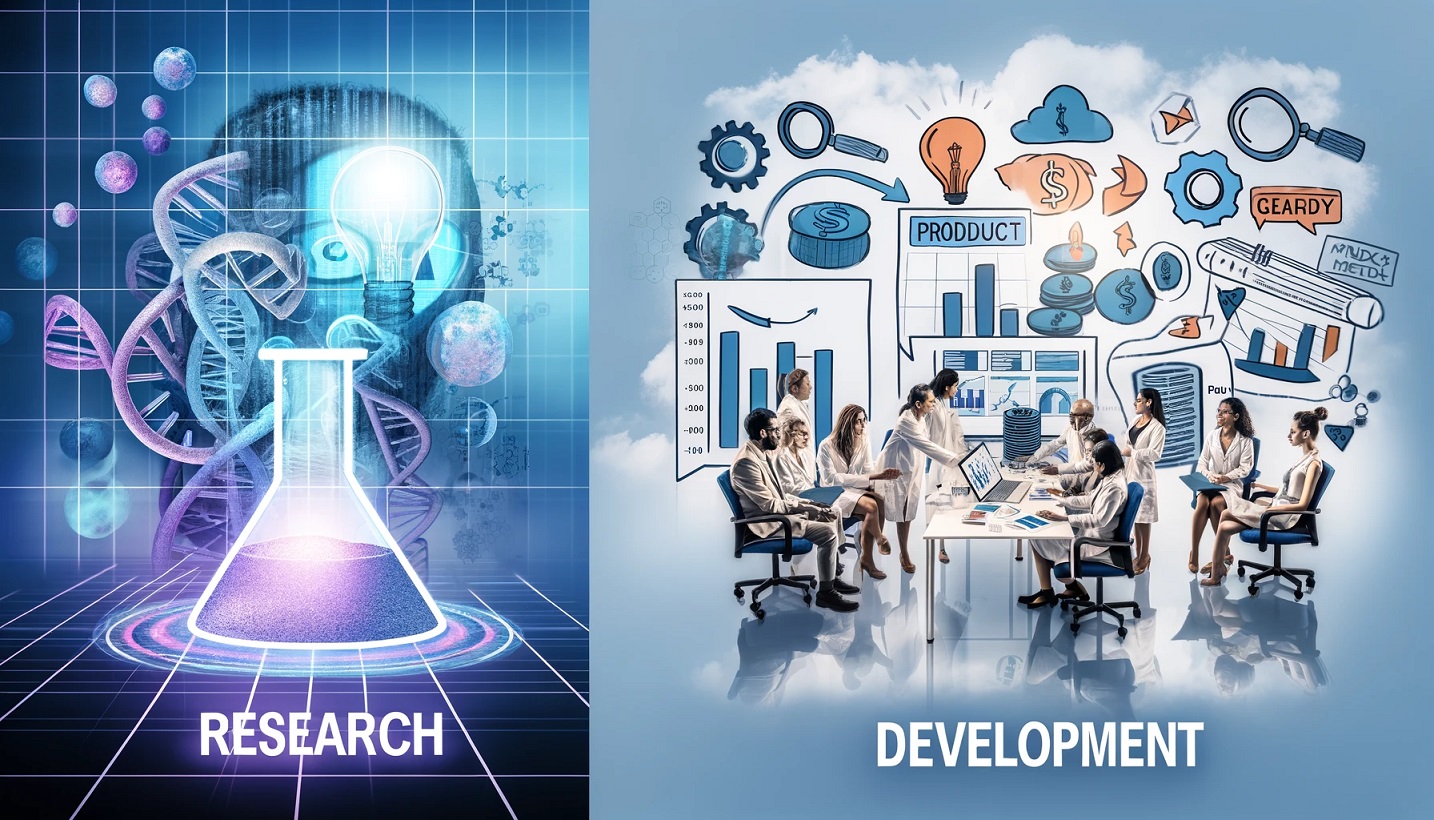In the fast-paced tech industry, the line between research and development often blurs, leaving many professionals pondering: How do we differentiate between managing technology development and product development? Understanding this distinction is crucial for any business aiming to satisfy unmet market needs efficiently.
Understanding the Core: Research vs. Development
At its heart, research (for technology development) is science-facing. It’s a journey of turning money into new knowledge. Imagine investing in exploring new technologies or methods without a direct application in mind—this is the essence of technology development.
On the flip side, product development is market-facing. It’s about turning the knowledge gained from research into money by developing profitable products or services that meet customer needs.
The Ultimate Goal: Satisfying Market Needs
The ultimate purpose of both research and development efforts is to satisfy unmet market needs. By strengthening the link between these two processes, you enhance the efficiency of turning money into knowledge and then back into money. Open innovation, technical brainstorming, and customer interviews are key strategies to fortify these links.
Open Innovation and Brainstorming
Seeking external technologies and engaging in technical brainstorming within your team can significantly strengthen the technology development link. Open innovation involves tapping into outside knowledge and technologies to enhance your internal projects. Meanwhile, brainstorming sessions encourage creative problem-solving and innovation within your team, enhancing product development efforts.
Customer Insights: The Key to Product Development
Customer insights or interviews are invaluable for product development. They provide direct insights into the market’s needs and preferences. However, it’s crucial to approach these interviews correctly. When discussing new technologies with potential customers, you have three options:
- Push your technology aggressively: History has shown that this approach often leads to failure.
- Ignore your technology: This seems counterintuitive, as many success stories stem from groundbreaking technologies.
- Silently test your technology: Conduct the interview as if the new technology doesn’t exist. Afterwards, assess if your technology aligns with the top customer outcomes. This approach provides unbiased evidence for or against the use of your technology.
Separating Processes to Avoid Confusion
To maintain clarity and efficiency, keep technology and product development processes separate. For example, product development milestones can be effectively tracked using a Gantt chart, but scheduling technical breakthroughs? That’s more challenging. This separation also applies to how you conduct customer interviews, ensuring you gather unbiased, valuable insights.
The Stage-Gate Process: Commercial vs. Technical Feasibility
Incorporate a clear stage-gate process in your innovation strategy. Start by understanding what customers want (commercial feasibility) before determining how your technology can meet those needs (technical feasibility). Remember, as Steve Jobs paraphrased Henry Ford, asking people what they want might lead to limited insights. It’s about reading between the lines and understanding the underlying needs that can be addressed with innovative solutions.
Conclusion
Distinguishing between research and development is crucial for any tech-oriented business. By focusing on open innovation, structured brainstorming, and strategic customer interviews, you can effectively turn money into knowledge and then back into money. Keep technology and product development processes separate to avoid confusion and inefficiency, and always prioritize understanding market needs over pushing technology. This balanced approach is key to creating products that truly meet market demands and drive innovation forward.



